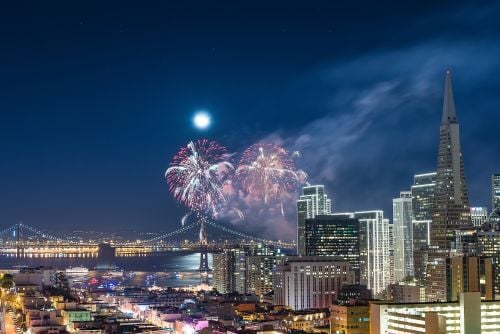How to Do Nothing: Resisting the Attention Economy by Oakland-based writer Jenny Odell had taunted me from bookstore shelves for years.
I was drawn to the title because I was drawn to the premise: To do nothing.
It was attractive, but almost cruel in its simplicity.
Nothing? How could I afford the luxury of doing nothing when time seemed to me to be one long caffeinated spasm towards productivity, self-improvement, a life?
In passing up this book again and again, I resisted the appeal of doing nothing. Instead, I hustled on to the next fleeting moment, mechanically-tuned for efficiency. This is the American way, after all. We play the role, and we play the role well. That is, until we fall into debt and despair. But there’s little time to dwell on such things!
At the turn of the year, I was quarantined with a case of COVID-19.
At the turn of the year, I was quarantined with a case of COVID-19. I was sick, but I was offered an opportunity. I had nowhere to be. I had no one to see. I was offered the opportunity to do nothing.
Truthfully, I didn’t exactly do nothing, but I did pick up the damn book. By the time I was ready to reenter the world, I had read it cover-to-cover.

My used and abused copy of Jenny Odell’s How to Do Nothing.
It was not what I expected. In fact, it was better. Odell managed to make a case for the art of doing nothing by weaving in considerations of capitalism, colonialist thinking, loneliness, and environmental abuse.
As something of a deranged reader who can’t help but highlight, underline, and bend the breath out of every book I read, my copy of How to Do Nothing is riddled with pen ink and post-it notes. Nevertheless, I’ll do my best to outline the highlights here.
“The ultimate goal of ‘doing nothing’ is to wrest our focus from the attention economy and replant it in the public, physical realm.”
First, Odell outlines the goal of doing nothing. Doing nothing is not catatonia, which is arguably closer in quality to our hustle culture mindset. Rather, it’s the act of practicing presence.
“From either a social or ecological perspective, the ultimate goal of ‘doing nothing’ is to wrest our focus from the attention economy and replant it in the public, physical realm,” Odell writes in the introduction.
“To capitalist logic, which thrives on myopia and dissatisfaction, there may indeed be something dangerous about something as pedestrian as doing nothing: escaping laterally toward each other, we might just find that everything we wanted is already here.”
“Repressive forces don’t stop people expressing themselves but rather force them to express themselves.”
Chapter one, “The Case for Nothing,” prizes the Nothing that precedes Something, just as mindful silence precedes meaningful speech. Odell critiques the “financially incentivized proliferation of chatter” online, citing Gilles Deleuze’s Negotiations:
“Repressive forces don’t stop people expressing themselves but rather force them to express themselves; what a relief to have nothing to say, the right to say nothing, because only then is there a chance of framing the rare, and ever rarer, thing that might be worth saying.”
Those who seek silence might then seek isolation, a retreat from a decidedly sick society. Odell has anticipated you.
“We have to be able to do both: to contemplate and participate, to leave and always come back, where we are needed.”
Chapter two, “The Impossibility of Retreat,” serves as a warning to those who fantasize about idyllic escape from social responsibilities, bolstering her argument with a look at the collapse of the 60’s counterculture movement.
“A spatial move to the country, or into an isolated communal house, did not always equal a move out of ingrained ideologies,” she warns.
“We have to be able to do both: to contemplate and participate, to leave and always come back, where we are needed.”
“Attention may be the last resource we have to withdraw.”
Chapter three, “Anatomy of a Refusal,” may be my favorite chapter. Odell advocates for the inspired outsider, like Diogenes of Sinope, the fourth-century Cynic philosopher notoriously known for roaming Athens with a lantern in hand, “looking for an honest man.”
Social figures like Diogenes who disrupt the mechanics of society offer “unexamined alternatives,” Odell argues. In this case, the individual is called to action in spite of expectations to conform to a certain standard of living or speaking. As individual actors, this is where our power lies.
“Civil disobedience in the attention economy means withdrawing attention,” Odell states.
“Attention may be the last resource we have to withdraw.”
Initially, I was skeptical. Withdrawing attention was an attractive prescription, but was it so easily achieved?
Let’s say you manage to distance yourself from your cell phone, a trial in itself. Let’s say you take yourself out on a good old-fashioned walk. If you’re a city dweller, where are your eyes to fall, if not on a visual cascade of advertisements?
Odell provides answers in the chapters that follow, although they’re likely not the answers you’d expect. For the sake of digestible pacing, and in service of the themes within this book, I’ll reveal these answers next week.
The post How I Discovered the Art of Doing Nothing: Part One appeared first on Broke-Ass Stuart's Website.










